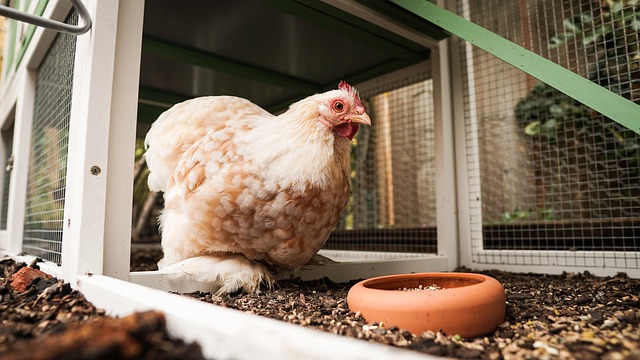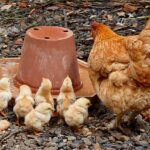A good chicken house should promote a good healthy ethos for your hens, roosters, chicks, and even the eggs. For that reason, it is spacious, airy, and safe. It must also help to keep off intruders and of course the predators. Another important thing is to help protect your chicken from bad weather.
Furthermore, a well-contrasted coop is easy to maintain clean and can be partitioned to accommodate hybrid chicken breeds. Here is how to go about constructing a good chicken house or coop.
How to Construct a Good Coop for Rearing Your Chicken
- Decide on the site or location
- Deciding on the size and design of the coop
- Choose proper house facets
- Ventilating the house
1. Decide on the site or location
Decide on the site or location
Choose a dry, flat, and secure location for the chicken coop. You can opt to build a raised birdhouse if unable to find such a location. A proper location also should have flowers and trees to break the strong winds but also regulate temperatures. This is because all chicken breeds cannot stand high temperatures. As long as they will not entertain predators, they will be ok. The trees can also provide shading.
2. Deciding on the size and design of the coop
The size of the coop depends on the number of breeds. Ideally, allow for one square foot per bird regardless of the breed. However, you can provide a space of 2 square feet per bird if you intend to keep the layers. Leaving a good spacing helps you avoid building new coops from scratch as you can always partition the existing one. When deciding on the size of the coop, consider that overcrowding is unhealthy especially if an illness breaks out.
There is no limitation to the design of the coop as far as you can keep with the proper building codes in this article, to help protect your birds from harsh weather and predators. In fact, a good design can help to better feed chickens, collect eggs, and even partition or remove partitions later on when the number grows.
2. Flooring
The flooring can be of concrete, wire mesh, wooden boards, slatted wood, plywood, painted flooring, linoleum and vinyl, rubber mats, and rubberized roof coat material. Make sure it is durable, low maintenance, easy to clean and disinfect, offers protection from rodents and predators, keeps out rodents and is cooler in warm weather. It should also discourage egg breakage, injury, and discomfort of the birds especially the chicks.
Walling
Chicken walling materials can be wooden, metallic, concrete, and virtually any other material that can be used to provide shelter as long as it is strong and the construction is done in observation of other standards.
Roofing
Roofing can also be metallic, wooden, iron sheets, grass, or other materials that provide shelter and protection from rains, predators, and strong winds.
3. Choose proper house facets
The east and west facets are to be completely covered to keep off the sun from the birds. The north and south facets are OK to leave partly open for the same reason. A 3-to-4 chicken house wire mesh can be used to cover the top end of the north or south facet to leave any partly opened. For too cold regions, you can always increase the coverage whereas more coverage can be done for hot regions.
4. Ventilating the house
Ventilating the house helps prevent the kienyeji or kroiler chickens from high heat. This is considerable in high temperate regions. The size of ventilation can be varied depending on the area or location. A chicken wire mesh is adequate to achieve desired ventilation while keeping off predators. In addition to ventilating the house using the wire mesh, consider temporal curtains and coverage that can be put into location to provide protection at night or during cold seasons and weather.


